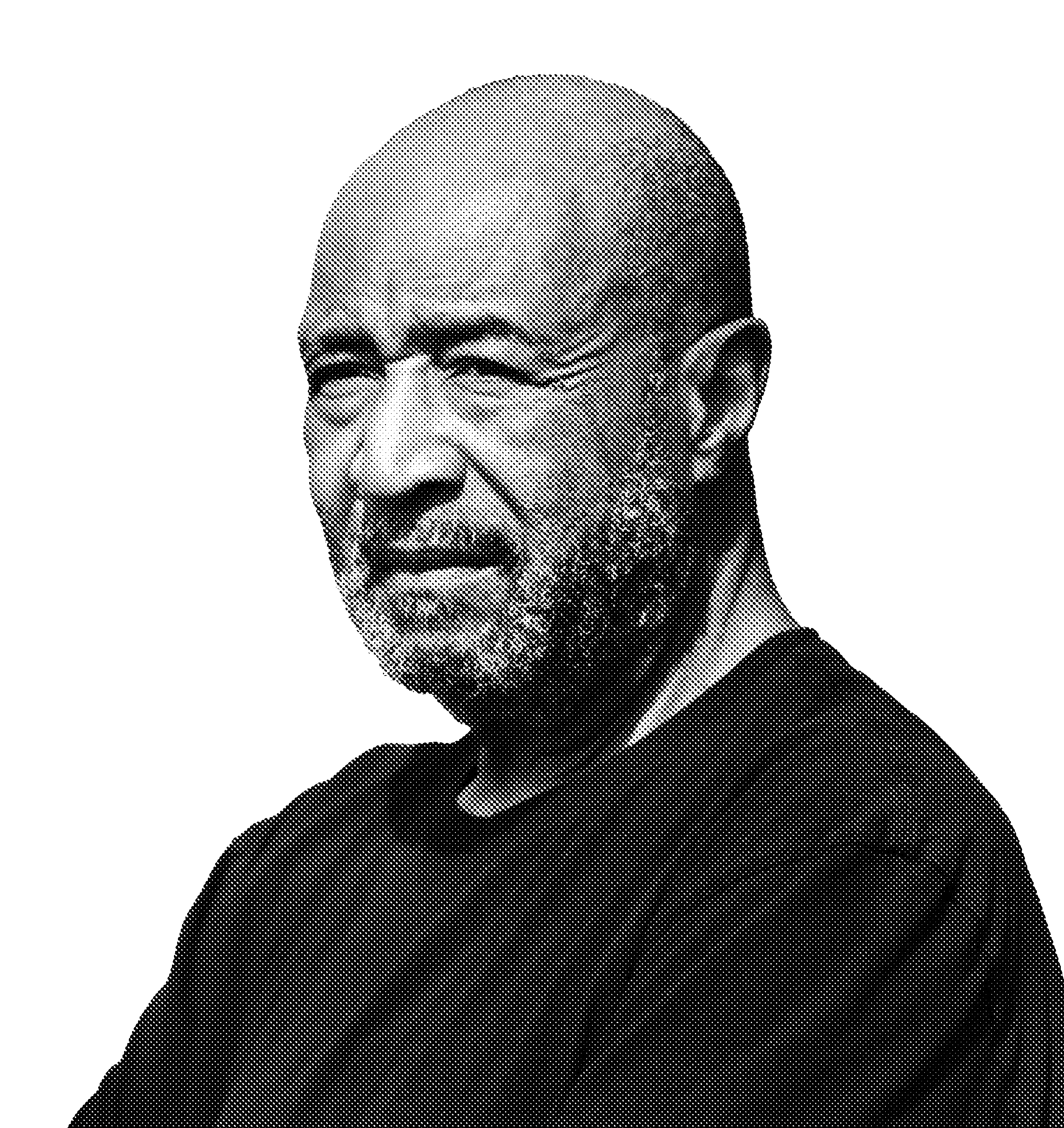If you or a friend need urgent assistance, call 911 immediately, or take your friend directly to the emergency room. If you feel it’s safe, stay with your friend, or find someone to stay with them until help arrives.
R~ADMAP TO TRAUMA & PTSD
Trauma is far more common than you might think, with the vast majority (70%) of people experiencing at least one traumatic event during their lifetimes. The effects of trauma, especially without the right support, can feel earth-shattering. Trauma has the potential to shift your worldview, sense of self, and relationships. It can also lead to post-traumatic stress disorder (PTSD), a clinical mental health diagnosis.
Trauma and PTSD can be overcome. This Roadmap provides an understanding of what trauma and PTSD are, their potential impact, how to cope, and where to find credible resources to further your healing journey.
Scroll on for more, and if this content ever becomes too difficult to read, skip to the Coping & Treatment section for coping skills, or take a break and engage in a soothing activity.
Created in partnership with Kenneth Cole Productions and Men’s Wearhouse


What are trauma & PTSD?
While not all trauma leads to PTSD, all PTSD stems from trauma.
TRAUMA
Trauma is the emotional or psychological response to a deeply distressing experience or situation. It typically creates a sense of fear that does not have to but can have lasting effects on well-being.
PTSD
Post-traumatic stress disorder, aka PTSD, is a clinical mental health diagnosis resulting from traumatic experience(s) that leads to a specific set of symptoms.
SOURCES OF TRAUMA & PTSD
Here are some experiences that are commonly considered traumatic and can lead to PTSD:
- Abuse (sexual, physical, emotional, psychological, cultural, financial)
- Accidents resulting in injury
- Assault
- Death of loved ones
- Discrimination
- Harassment
- Incarceration
- Poverty
- Medical interventions
- Natural disasters
- Neglect
- Warfare
- Witnessing violence
TYPES OF TRAUMA
While there are many types of trauma, below are some of the more common ones. Click each term to learn more.
definition
A single distressing incident → trauma
Example
Surviving a hate crime
definition
Prolonged, repeated experiences → trauma
Example
Financial abuse that unfolds over years
definition
Multiple distressing events that are interpersonal and invasive in nature → trauma
Examples
Ongoing child abuse; intimate partner violence
definition
A major event experienced by a group of individuals or within a community → trauma
Examples
Historical trauma; the COVID-19 pandemic
definition
Mistreatment from another person or persons → trauma
Examples
Abuse; combat; assault; discrimination
definition
Highly distressing experiences that do not originate from human behavior → trauma
Examples
Medical diagnoses; natural disasters
definition
Terrifying events experienced by one generation → similar trauma-based reactions in next generation(s)
Examples
Historical trauma; slavery; the Holocaust
definition
Learning about the traumatic experiences of others, especially those you are close to → trauma
Example
A loved one recounting an assault they survived


WARNING SIGNS OF PTSD
To stop trauma from progressing to PTSD, early care and support after traumatic events is crucial. And knowing the warning signs of PTSD can go a long way in recognizing when support is needed. Here they are:
- Aggressive or emotional outbursts
- Acute or chronic unexplained physical pain
- Heart palpitations, trembling hands, or sweating
- Jumpiness
- Digestion disruptions
- Low mood
- Social isolation
- Loss of interest in activities
- Distrust of others or the world
- Nightmares and/or flashbacks
- A sense of self-blame, worthlessness, shame, or guilt
- Avoidance of people, things, or situations related to traumatic event
- Difficulty with sleep, eating, or physical intimacy
- Weakened immune system
- Headaches
- Feeling empty or hopeless
- Irritability
- Dissociation
If you or someone you know is in crisis, having thoughts of suicide, or needs a safe place to talk, you or they can call 988 or text the Crisis Text Line by texting “COALITION” to 741-741.
How trauma & PTSD impact mental health
The impact of trauma can touch all major aspects of life. Here are some common ways trauma & PTSD can affect your well-being.
Daily Impact
Trauma & PTSD can lead to difficulties that negatively impact life on a daily basis. Some of these include:
Detachment from or negative sense of self
Jaded, fearful, or mistrustful view of the world or other people
Diminished sense of safety
Strained relationships
Difficulty regulating emotions
Decline in performance at work
Decline in school performance
Impaired cognitive functioning (e.g., memory, focus)
Clinical Impact
Trauma can lead to difficulties that are so severe that a clinical diagnosis and treatment are necessary. Experiences of trauma can raise your susceptibility to:
PTSD
Complex PTSD
Prolonged grief disorder
Other mental health conditions
Medical conditions
Trauma & Veterans
Active duty service members and Veterans are faced with traumatic experiences inherent to the nature of their work. Exposure to trauma over time can impact mental health and well-being. Many service members find difficulty in talking to their friends and families about their experiences and the lasting impact those experiences have on their lives. This can leave Veterans feeling isolated. However, you don’t have to struggle alone. (Learn more in the Coping & Treatment section.)
If you are a Veteran or know a Veteran in need of support, call 988, then press 1 to be connected with a responder qualified to support Veterans.
Coping with trauma & PTSD
Daily Tools
When it comes to trauma and PTSD, there are many sources of healing. It is important to know where to look, find what works specifically for you, and be ready to take steps toward implementing coping strategies.
Below are five ways to promote healing after a traumatic event — click each skill to learn more. These activities can be done on your own for free or low cost.
As with any tips for boosting mental well-being, the most important factor is that you find ways that work for you. If none of these speak to you, see if you can get creative and come up with some of your own.
The Skill
The Why
Social support is one of the best antidotes to trauma and PTSD. Consider who in your life you can lean on or be vulnerable with.
The How
Video chat with a close friend to talk about how you’re feeling.
If you can’t think of someone, seek out a support group online.
The Why
Trauma and PTSD can disconnect you from yourself in many ways. Practice mindfulness techniques in order to find yourself again.
The How
Practice a mindful body scan. Set a timer for three minutes, close your eyes, and just notice how each part of your body feels, scanning from your head to your toes. Try to let go of any judgment.
The Why
Traumatic experiences can stay with us for years in the body, and attention to the physical body can be restorative.
The How
Find an activity that feels soothing like yoga, massage, stretching, or a self-hug.
The Why
Trauma can negatively impact the way we view ourselves. Developing your strengths can bring you a sense of purpose and resilience.
The How
Journal about the positive things a friend might say about you or moments that you’ve felt proud of yourself.
The Why
Practicing self-love can help release self-blame and replenish a positive view of yourself after trauma. MHC’s Roadmap to Self-Love can help you find ways of doing that.
The How
Give yourself some positive self-talk or think of something kind to say to yourself. If that feels hard, try simply starting with, “I am whole.”

Clinical Treatments
These are more formal treatment options. While there are many forms of clinical treatment for trauma and PTSD, these are the more common and evidence-based ones.
Cognitive Behavior Therapy (CBT)
Explores the connection among behaviors, feelings, and thoughts to modify patterns that create difficulties in daily life after trauma.
Cognitive Processing Therapy (CPT)
Helps build skills to shift and challenge unhelpful beliefs related to traumatic experience(s).
Prolonged Exposure
Shows you how to gradually approach memories, situations, and emotions that are related to past trauma so that avoidance is reduced and a sense of freedom restored.
Cognitive Therapy
Modifies the damaging memories and evaluations related to traumatic experiences so that more helpful thought patterns can emerge.
Eye Movement Desensitization and Reprocessing (EMDR)
Encourages briefly focusing on difficult memories while bilateral stimulation takes place (e.g., eye movements), which can decrease the vividness and intensity of emotions connected to those memories.
Brief Eclectic Psychodynamic Therapy
Combines CBT with a focus on emotions (e.g., shame and guilt) and emphasizes the healing relationship between a therapist and client.


Overcoming Roadblocks
While the above coping strategies might sound great in theory, sometimes obstacles get in the way of practicing them. Here are some common roadblocks to using coping skills and how to sidestep them.
Addressing these roadblocks is often the first step toward healing from trauma and PTSD.
Shame
It is very common for folks who have experienced trauma to blame themselves… But remember, it’s not your fault. Imagine if this happened to a loved one — would you speak to them the way you speak to yourself?
Resource access
Therapy can be a great way to process traumatic events, but not everyone has access to that. You may be able to find low-fee services in your area — but you can also find trusted sources online to learn about trauma, coping skills, and your legal rights.
Isolation
If you don’t feel like you have a trusted loved one to talk to, there are plenty of other options to connect. Try looking into online forums or support groups offered by community orgs or hospitals.
Guilt
Guilt can be a really complex emotion. It often comes from the idea that we’ve hurt someone. It might help to journal or talk to someone you trust, and you may realize what you’ve been telling yourself only hurts yourself.
Discomfort or fear
After experiencing trauma, it’s normal to fear places or things that remind you of the event(s). That’s the part of your mind trying to protect you — there’s no rush to re-engage, and you don’t have to do it alone. Try reaching out to a professional or a close friend to gradually work your way up to your goals.
You deserve to feel safe and at peace.
Whatever stage of healing you are in today, remember that growth after trauma is a journey, and that journey can take time. If you feel ready, we’ve got more resources for you to explore below.
RES~URCES
Check out the Mental Health Coalition’s Resource Library for additional information on boosting mental well-being.
If you or someone you know is experiencing a mental health crisis, use the resources below:
988
The 988 Suicide & Crisis Lifeline provides 24/7, free and confidential support for people in distress, prevention and crisis resources for you or your loved ones.
Crisis Text Line
Text COALITION to 741741 from anywhere in the United States, anytime. A live, trained Crisis Counselor receives the text and responds, helping you move from a hot moment to a cool moment.
National Sexual Assault Hotline
RAINN (Rape, Abuse & Incest National Network) is the nation’s largest anti-sexual violence organization. Call their National Sexual Assault Hotline at 800-656-4673.
Learn More About PTSD & Trauma
- What is Trauma? (ADAA)
- On Trauma, Racism, and How We Show Up for Each Other (Crisis Text Line)
- Triumph Over Trauma (Headstrong)
- Reminders for Survivors of Trauma (NAMI)
- What is Racial Trauma? (MHA)
- Stop AAPI Hate Resources (NAAPIMHA)
- Multilingual Trauma Resources (Child Mind Institute)
- Helping Kids Through Trauma (On Our Sleeves)
- Complex Trauma Resources
- Trauma Reading & Training Programs (The Trauma Foundation)
- How to Manage Trauma – Infographic (National Council for Behavioral Health)
Services for PTSD & Trauma
- National Child Traumatic Stress Initiative by SAMHSA
- International Society for Traumatic Stress Studies Clinician Directory
- The Headstrong Project – PTSD Treatment for Military Service Members, Veterans, and Their Families
- NAMI Homefront – Program for Military Service Members, Veterans, and Their Families
- PTSD Coach App for Veterans by VA’s National Center for PTSD
- Safe Horizon Victim Assistance & Hotline
- Racial Trauma Resources (Not 9 to 5)
- Crisis Text Line – Text COALITION to 741741
- 988 Suicide & Crisis Lifeline
- National Sexual Assault Hotline by RAINN
Trauma & social justice
While anyone can experience trauma, some communities are disproportionately affected by trauma due to systemic inequity. Thinking intersectionally about social group identities like race, ethnicity, culture, social class, sexual and gender identity, ability status, nationality, and religion is important when exploring trauma and PTSD.
These are some factors that can lead to higher levels of trauma and PTSD based on social group identity:
Although daunting, in the face of injustices like these, working to build your own joy can be an act of resistance. Read on for ideas on how to cope.